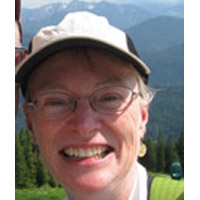Helen Young
Professor Emerita of Biology

- hjyoung@middlebury.edu
I am a field biologist interested in plant reproductive biology, pollination biology, and the conservation of native bee pollinators.
My studies of plant-pollinator interactions examine how floral traits affect pollinator behavior, which, in turn, influence plant reproductive success. In Vermont, I have worked extensively with jewelweed (Impatiens capensis) and its pollinators. This system is also characterized by nectar-robbers (bees that remove nectar from flowers without pollinating them), which has led to my investigating the causes and consequences of robbing. In addition, I am examining the effect of habitat fragmentation on bumblebee pollinators in Addison County. In this project, I am examining what features of the landscape are associated with bumblebee abundance with an eye toward conservation of these landscape features to maintain healthy and diverse pollinator communities.
My recent thesis students have examined the effects of mycorrhizal diversity on oak seedlings, why bees forage in the upward direction on inflorescences, and details of the different genetic models of captive breeding programs.
Publications
*Indicates a Middlebury College student
Young, H.J. 2008. Selection on spur shape in Impatiens capensis. Oecologia 156:535-543.
Young, H.J., D.W. Dunning*, K.W. von Hasseln*. 2007. Foraging behavior affects pollen removal and deposition in Impatiens capensis (Balsaminacaeae). American Journal of Botany 94(7):1267-1271
Young, H.J. and T.P. Young. 2003. A hands-on exercise to demonstrate evolution by natural selection and genetic drift. American Biology Teacher 65(2): 458-462.
Young, H.J. and L. Gravitz. 2002. The effects of stigmatic age on receptivity in Silene latifolia (Caryophyllaceae). American Journal of Botany 89(8): 1237-1241.
Young, H.J. 2002. Diurnal and nocturnal pollination of Silene latifolia (Caryophyllaceae). American Journal of Botany 89(3): 433-440.
